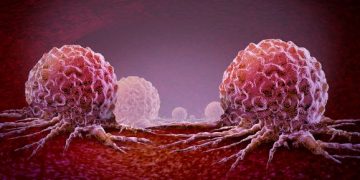Bone cancer usually starts in the bones of the arms and legs but it can start anywhere in the bone. Cancer that starts elsewhere in the body and spreads to the bone is called secondary bone cancer. It’s less common than primary bone cancer. But it can be treated the same as bone cancer that has not spread.
The main symptom of bone cancer is pain. The pain often develops slowly and can come and go. It may get worse at night or when resting. Some people find it difficult to move the affected bone because of the pain. Others notice a lump on or around the affected bone. Swelling and redness (inflammation) are also common. The type of pain a person has depends on the type of bone cancer they have. If the cancer is at the end of a bone, it can cause pain when it breaks or fractures. Other types of cancer in the bone, such as osteosarcoma, can cause a sharp or burning pain.
Some people with bone cancer feel extreme tiredness or lack of energy, especially if the tumor is near a major joint such as the hip or shoulder. This can be a sign that the cancer has spread to other parts of the body.
Because bone cancer is rare, it’s important for anyone who has these symptoms to see their GP. They will examine them and take a full medical history. This includes information about any other health problems and the medicines a person takes. They will ask about any family members who have had cancer. People with certain inherited conditions, such as Li-Fraumeni syndrome, are at higher risk of developing bone cancer.

If the doctor suspects that a person has bone cancer, they will do imaging tests and blood tests. These tests will help them find out how the cancer is growing and where it started. They will also check the general health of a person and whether the cancer has spread.
Imaging tests include X-rays, computed tomography (CT) and magnetic resonance imaging (MRI). An MRI scan uses magnets instead of radiation and produces computer-generated pictures of the inside of the body. The test is done in a hospital or clinic. A dye may be injected into a vein before the scan to make the pictures clearer.
CT scans use a series of X-rays to create a detailed picture of the inside of the bones. They are the most accurate way to find a bone cancer. X-rays and CT scans are safe and quick to do.
Blood tests can help doctors find out how well the liver and kidneys are working and how the bone is forming or breaking down. The results of these tests will help doctors decide the best treatment for a person with bone cancer.
Depending on how the cancer is diagnosed, treatments can include surgery, chemotherapy and radiation therapy. People with a bone cancer that has not spread will also need to have regular follow-up appointments with their GP or specialist nurses. It’s important for people with bone cancer to keep these appointments so the doctors can monitor their condition and treat it if needed.









